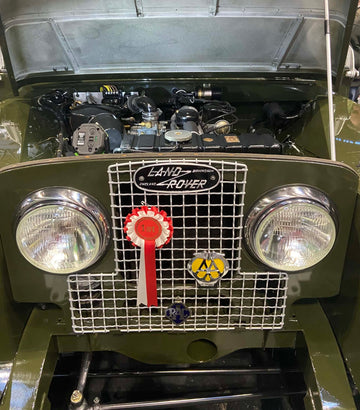Introduction
When it comes to purchasing a classic car, many people tend to focus solely on the registration date without considering the importance of the build date. However, understanding the reasons behind the significance of build dates can provide valuable insights for both seasoned collectors and new aficionados.
Let’s delve into the key reasons why build dates shape the identity of your classic Land Rover. This information is vital for collectors and enthusiast who value the historical accuracy of their vehicles.
Historical Significance
The build date of your Land Rover refers to the date when the vehicle was manufactured, marking the vehicle’s birth in the automotive world. Build dates also determine specific details about the vehicle. It identifies the exact specifications, features and options that were available at the time of manufacturing.
Registration dates, on the other hand, are more relevant for legal and administrative purposes, such as determining ownership, taxation and compliance with regulations.
The Land Rover production line at Solihull on 8 April 1975
Was your Land Rover born on this date?
Parts Compatibility
Classic Land Rovers require regular maintenance and occasional repairs. Knowing the build date is crucial when sourcing original and replacement parts.
Land Rover models often underwent changes throughout their production years, resulting in variations in components and specifications. By identifying the build date, you can ensure you purchase the correct parts that are unique to your Land Rover’s model, avoiding unnecessary expenses and potential compatibility issues.
Land Rover Series 2/2a: Pegasus Bulkheads
Originality And Authenticity
Knowing the build date of your Land-Rover determines it’s value. It shows whether it was produced during significant moments in automotive history, such as the introduction of new features, design changes, or even world events that impacted production, for example:
Limited Edition Releases – Build dates can align with the launch of limited edition models or special variants. These unique build dates often indicate a specific production run dedicated to a particular event, anniversary, or collaboration.
Historical Milestones – Build dates can align with important historical events too, such as the end of a production era, the start of a new generation, or even global events that impacted the automotive industry.
Production Challenges – Build dates can also reveal production challenges or interruptions that affected the manufacturing process, such as strikes, supply chain issues, or natural disasters may have caused delays or changes in production schedules, resulting in unique build dates for certain vehicles.
Discovering these connections between build dates and historical events adds an extra layer of intrigue and why purists appreciate the vehicles not only for their design and performance but also for their place in history, making them a truly remarkable piece of automotive heritage.
Some unique build dates can enhance the rarity and collectability of a classic Land Rover, making them highly sought after by enthusiasts and collectors.

Conclusion
Finding the build date of a classic car adds another layer of fascination and authenticity to the ownership experience.
Build dates provide valuable information about authenticity, historical significance, parts compatibility, and potential resale value. It provides a glimpse into the vehicle’s history and unique characteristics. Whether you’re a passionate Land Rover enthusiast or considering purchasing one, understanding the significance of build dates and where to locate them will undoubtedly deepen your appreciation for these iconic cars.
While registration dates are essential for legal ownership, build dates hold more significance for classic Land Rover enthusiasts and collectors.



